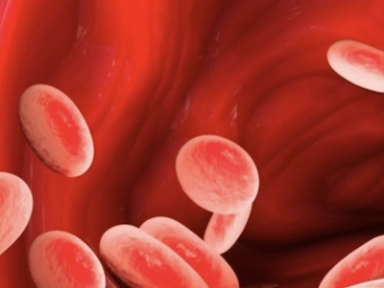Use of Lipid-Lowering Therapies Over 2 Years
Prescription patterns of lipidlowering therapies over time in patients with atherosclerotic cardiovascular disease
Findings from Gould study
Key Takeaway
- The Gould study demonstrated only modest intensifications of LLTs and improvement in LDL-C levels over 2 years in patients with ASCVD.
- In patients with LDL-C ≥70mg/dL or receiving PCSK9i, only 17.1% patients had LLT intensification.
- About 1 in 3 patients achieved LDL-C level <70 mg/dL, and 1 in 10 patients achieved an LDLC level <55mg/dL.
Why This Matters
- Compliance to guideline recommended use of LLTs in ASCVD and evidence on LDL-C level attainment is limited.
- Gould study tracks LDL-C treatment patterns over time in patients with clinical ASCVD.
Study Design
Prospective, multicenter, observational, gould registry study across us (N = 5,006)
Inclusion Criteria:
- Age ≥18 years, established ASCVD*, and receiving some type of stable LLT for ≥4 weeks
Exclusion Criteria:
- No informed consent,
- Participating/planningparticipation in an interventional clinical study involving any investigational medical device or drug treatment,
- Life expectancy of <12 months, (4)Pregnant/breastfeeding/planning a pregnancy
Study Cohort:
- Cohort 1: Receiving PCSK9i
- Cohort 2: Not receiving PCSK9i, LDL-C ≥100 mg/dL
- Cohort 3: Not receiving PCSK9i, LDL-C 70-99 mg/dL
- Primary outcome: Change in LLT over 2 years
- Secondary outcomes: (1) Performance of a blood test measuring LDL-C andother lipid values, (2) Timing of lipid measurement, LDL-C and other lipid values, and (3) Responses to the physician and patient surveys
Key Results
- 5,006 patients† (mean age = 67.8 years), from 119 centers in US (Cohort 1: 554, Cohort 2: 1,801, Cohort 3: 2,651)
- Of these, 4,257 patients completed 2 years of follow-up (Cohort 1: 512 and Cohorts 2 and 3: 3,745)
LLT Intensification
17.1% patients (855/5,006) hadsome type of LLT intensification‡
Cohort 1: 12.5% patients
- Statin intensified: 1.3%, statin added:3.6%, ezetimibe added: 4.0%, PCSK9i added: 1.8%
Cohort 2: 22.4% patients
- Statin intensified: 6.4%, statin added:4.7%, ezetimibe added: 6.8%, PCSK9i added: 6.3%
Cohort 3: 14.4% patients
- Statin intensified: 6.3%, statin added:2.0%, ezetimibe added: 4.5%, PCSK9i added: 2.2%
Improvement in LDL-C Levels
88.5% patients (3,768/4,257) had lipidsmeasured at least once in 2 years
Median LDL-C levels at 2 years:
- Cohort 1: Stable from 68 mg/dL to67 mg/dL, P <0.77
- Cohort 2: Decreased from120 mg/dL to 95 mg/dL, P <0.001
- Cohort 3: Decreased from82 mg/dL to 77 mg/dL, P <0.001
Goal LDL-C <70 mg/dL (% patients):Cohort 1 = 52.4%, Cohort 2 = 21.0%, and Cohort 3 = 33.9%
Goal LDL-C <55 mg/dL (% patients):Cohort 1= 39.9%, Cohort 2 = 10%, and Cohort 3 = 11.9%*
*ASCVD defined as any 1 of the following: history of myocardial infarction, coronary artery disease, coronary or other arterialrevascularization, ischemic stroke or transient ischemic attack, carotid artery stenosis, or documented peripheral arterialdisease secondary to atherosclerosis. † 80.5% had coronary artery disease, 31.7% had myocardial infarction and 33.9% had type 2 diabetes. ‡ At 2 years 83.7% were receiving statin, 43.6% were receiving a high-intensity statin, 14.3% were receiving ezetimibe, and 13.5% were receiving PCSK9i.
ASCVD, atherosclerotic cardiovascular disease; GOULD, Getting to an Improved Understanding of Low-Density Lipoprotein Cholesterol and Dyslipidemia Management; LDL-C, low-density lipoprotein cholesterol; LLT, lipid-lowering therapy; PCSK9i, proprotein convertase subtilisin/kexin type 9 inhibitors
- Cannon CP, de Lemos JA, Rosenson RS, Ballantyne CM, Liu Y, Gao Q, et al. Use of lipid-lowering therapies over 2 years in GOULD, a registry of patients with atherosclerotic cardiovascular disease in the US. JAMA Cardiol. 2021; 6(9):1060–1068. doi: 10.1001/jamacardio.2021.1810. PMID: 34132735.

.webp/jcr:content/thumbnail%20(1).webp)


.webp/jcr:content/jcr_content%20(9).webp)